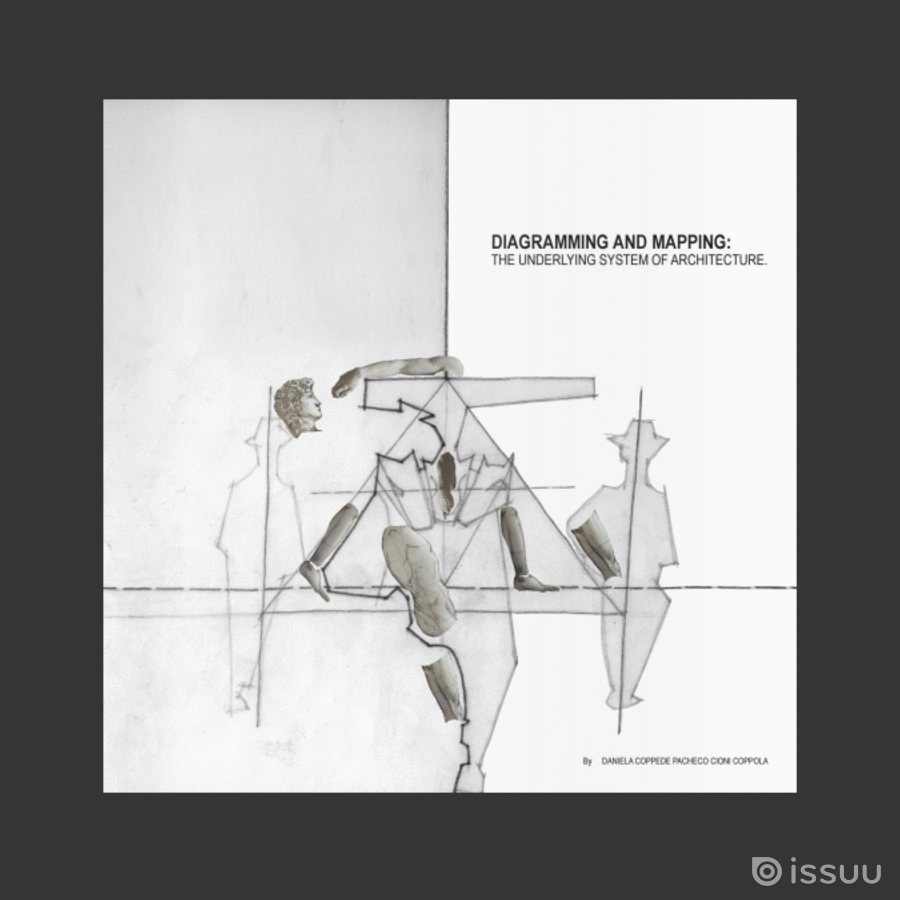
DIAGRAMMING AND MAPPING: The Underlying System of Architecture
By
Daniela Coppede Pacheco Cioni Coppola
Chair: Albertus S. Wang.
Co-Chair: Frank M. Bosworth
Abstract
Architecture is a multidisciplinary field in which the idea is generative. It is a mediation between ethics and poetic, intention and intuition, physical and metaphysical aspects. Alberto Perez-Gomes calls attention to the necessity of the valorization of the poetic imagination of architects: How do architects generate ideas? What inspires them? We internalize all our experiences and observations creating in our minds a narrative that may or may not be related to what we see or experience. Thus, we form our repertories that are accessed during the creative process and, in conjunction with the specifics proposed by a given design, lead to an idea. Architects can be inspired by something, and its essence becomes Architecture; in this way, we borrow the essence of what inspired us. This process of constructing an idea can happen in many different ways. This work revisits Mae Lee T. Foster’s arguments about the elaboration of conceptual diagrams, or parti diagrams, as a process of constructing and reinventing the design idea and understanding the underlying systems in architecture. Those systems include concept, spatiality, and tectonics, being the mediator between the conceptual idea (metaphysical) and the built environment or artifacts (physical). Foster argues that the parti diagram could generate a design of all scales – urban, architecture, and artifacts. This thesis adopts this theoretical premise and tests it using the example of furniture design. The methodology starts by understanding the essence of a painting by Di Cavalcanti, depicting the conquest of Brasilia. A parti diagram is generated by mapping – considering the morphology of the painting – and diagramming or outlining its descriptive organization. Then, borrowing human bodies from other masterpieces, the body is introduced as both “scale” and “program,” establishing a dialogue between the conceptual, historical, philosophical, and contextual aspects within the diagram. After this process of negotiation between the diagram, the body, and the essence of the object of design has taken place, the idea is born. This research aims to uncover another layer of understanding of how design can be approached.